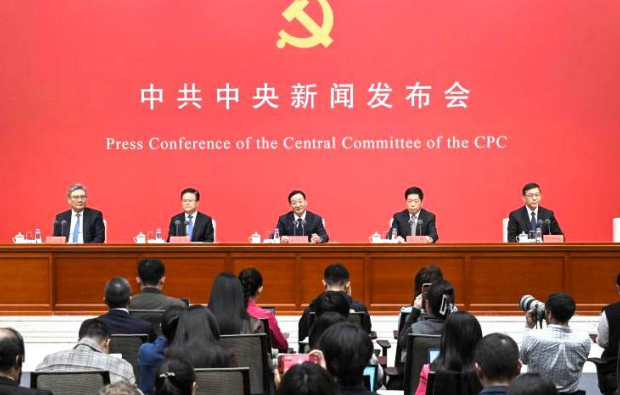
Last month, the Communist Party of China held the fourth plenary session of the 20th Central Committee and adopted the 15th Five-Year Plan for 2026-30 period. Since 1953, these rolling blueprints have steered the world's most populous nation from post-war devastation to global powerhouse status, lifting hundreds of millions out of poverty and cementing its role as the manufacturing heart of the planet.
Like many others before it, the 15th Five-Year Plan embody a distinctive strength of China's national governance: the ability to blend long-term vision with adaptive execution. Unlike the short-term electoral cycles that plague many advanced economies where new administrations dismantle predecessors' policies thereby breeding inconsistency, China's plans offer continuity with flexibility.
Over the years, modernisation has remained the enduring theme, but specifics evolve with the times. From heavy industry focus in the 1950s to digital innovation today; the persistence, coupled with adaptability, has allowed China to navigate crises like the 2008 financial meltdown and the Covid-19 pandemic without derailing its development trajectory.
What elevates these plans is their democratic ethos, a vivid embodiment of whole-process people's democracy. In January this year, the CPC solicited opinions from party members and non-party figures. By February, six research teams fanned out across 12 provinces, while central departments tackled 35 key topics. President Xi Jinping hosted a Shanghai symposium in April, drawing input from diverse regions, followed by Premier Li Qiang's sessions with economists, scientists, and grassroots voices. In a world where policy often feels imposed, China's approach demonstrates how planning can be both scientific and inclusive, fostering legitimacy and buy-in.
Beyond governance, the Five-Year Plans are market-enabling marvels. The 15th Five-Year Plan, for example, articulates national priorities, optimises public resource allocation and steers private investment toward synergistic goals. By signalling clear policy directions, the blueprint stabilises expectations, allowing both domestic and foreign businesses to plan with confidence.
China’s fervent implementation of the plans has enabled it to create the twin miracles of rapid economic development and long-term social stability; thereby transforming itself in just a few decades from a poor and backward country into one with a per capita income exceeding $13,000 (Sh1, 690,000). Beijing’s manufacturing output today accounts for nearly 30 per cent of the global total while the overall comprehensive national strength ranks among the foremost in the world.
China’s planning consistency offers a veritable reference points for many emerging economies that often struggle to formulate sustainable national strategies that can deliver long term prosperity. China's stability has effectively become the Global South's engine, with potential to pull billions of people into prosperity. Under the 15th Five-Year Plan, the opportunities for the Global South are as vast as they are actionable. As domestic demand surges, with household consumption rates climbing and internal markets driving growth, for countries like Kenya, this translates to inexhaustible opportunity for exports, joint ventures and foreign direct investments.
Second, high-level opening-up will supercharge trade and investment. China pledges to negotiate bilateral pacts, including a Partnership Agreement for Common Development with African nations like Kenya. It will diversify markets, balance imports-exports, and extend zero-tariff treatment to 100 per cent of lines for diplomatically responsive African countries. The Belt and Road Initiative cooperation is also poised to blend major signature projects like Kenya's Standard Gauge Railway with small and beautiful welfare initiatives, such as solar micro grids to vocational training thereby directly touching livelihoods in partner countries.
Third, China’s scientific and technological innovation will catalyse industrial leaps. By prioritising original breakthroughs in core technologies, China aims to fuse innovation with industry, ballooning emerging sectors like biotech and renewables. This provides a window for technology transfer to Africa while harnessing the continent’s partnership for a more liveable planet through resource beneficiation.
Ultimately,
these opportunities culminate in shared destiny. China has become the strongest
champion of the rights of developing countries in the global arena. By
Championing the Global Development Initiative, alongside other initiatives,
Beijing is leading the search for a more rational, and inclusive globalisation.
Solidarity with the Global South means amplified voices in forums like the
United Nations, increased aid and public goods like debt relief or climate
funds.
By opposing bullying, be it trade wars or unilateral sanctions, China can significantly safeguard collective interests, upholding humanity's common values. Finally, in building a community of shared future, the 15th Five Year Plan cements a platform of mutual elevation, where Kenya’s youth innovate alongside Shenzhen start-ups and Africa's resources fuel equitable growth.
The writer is a scholar of international relations with a
focus on China-Africa development cooperation. X: @Cavinceworld






![[PHOTOS] Betty Bayo laid to rest in Kiambu](/_next/image?url=https%3A%2F%2Fcdn.radioafrica.digital%2Fimage%2F2025%2F11%2F3b166e2e-d964-4503-8096-6b954dee1bd0.jpg&w=3840&q=100)







![[PHOTOS]Goons vandalise Nargis Restaurant in Westlands](/_next/image?url=https%3A%2F%2Fcdn.radioafrica.digital%2Fimage%2F2025%2F11%2Fa1c98f6c-2b1d-4b50-b112-1def4d93a193.jpeg&w=3840&q=100)

